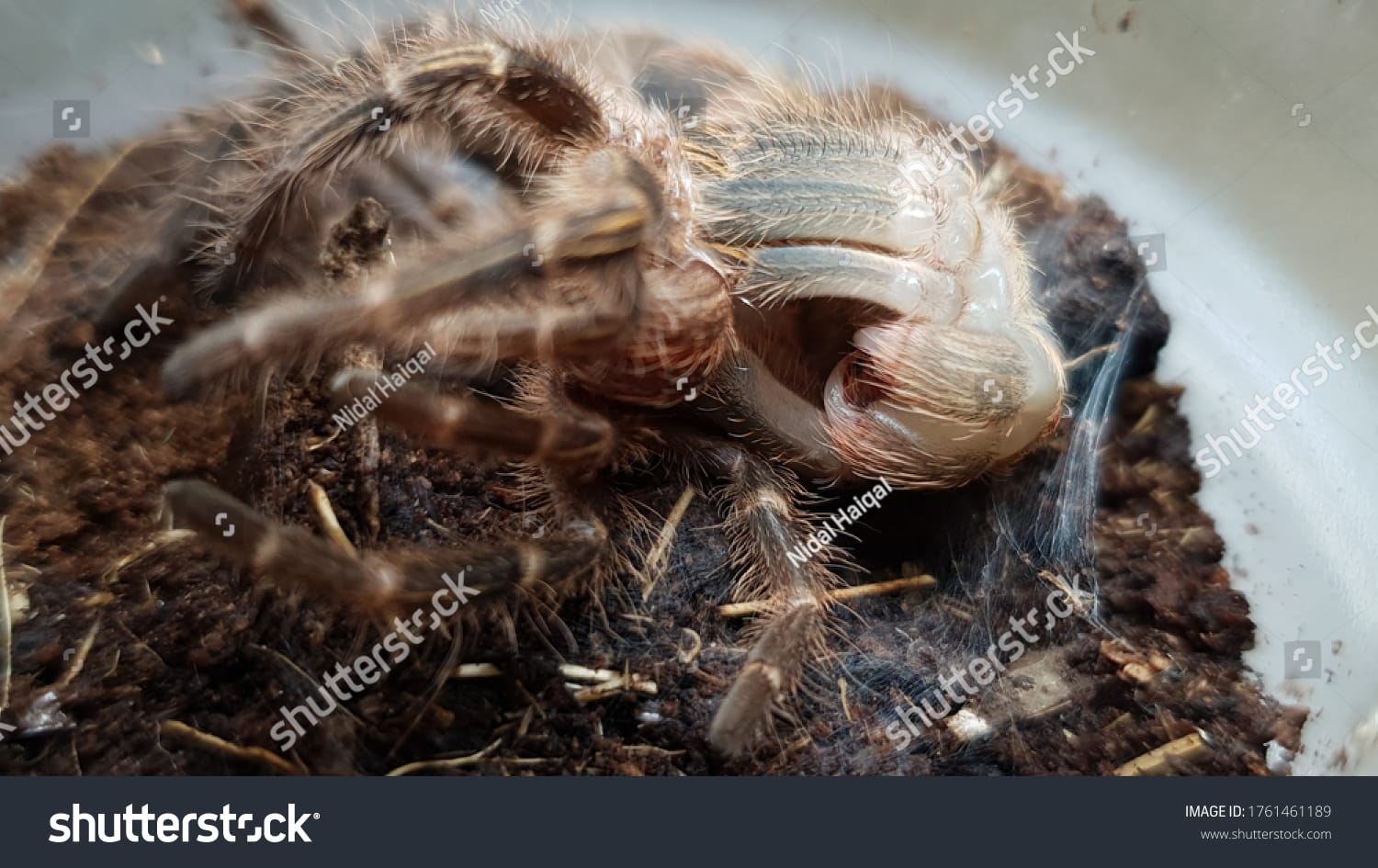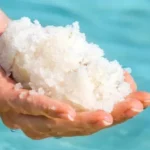Got yourself a furry little tarantula buddy? Ever wondered about that cool thing they do where they shed their old skin and come out all shiny and new? That’s called molting, and it’s like a superpower for your spider friend. In this guide, we’ll show you all the ins and outs of tarantula molting, from the signs to look for to the care they need along the way. Get ready to become a pro in the art of tarantula molting!
How to Spot an Upcoming Molt: Decoding Your Tarantula’s Signals
Before the big reveal, your eight-legged buddy will start showing some telltale signs that a molt is on the horizon. They’re not as subtle as you might think!
- Appetite Takes a Nose Dive: Don’t worry if your tarantula suddenly turns up its nose at its usual cricket or worm feast. A loss of appetite is one of the first hints that a molt is approaching.
- Hermit Mode Activated: Just like us when we need some downtime, tarantulas prefer solitude before a molt. You might notice them retreating to their hidey-hole more often and generally being less active.
- Color Me Dull: As the molting process gears up, your tarantula’s usually vibrant colors might seem a bit, well, dull. It’s like their own personal pre-makeover phase.
- The Case of the Mysterious Bald Spot: For our New World tarantula friends (those hailing from North and South America), keep an eye on their abdomens. A shiny, bald spot is a surefire sign that a molt is imminent.
- Hydration is Key: Molting is thirsty work! You might notice your tarantula spending more time sipping from its water dish in the days leading up to a molt.
Unveiling the Molting Process: A Stage-by-Stage Guide
Now, let’s talk about the star of the show—the actual molting process! It’s a carefully choreographed sequence of events that will leave you in awe of these amazing creatures.
- Pre-Molt: All those signs we just talked about? Consider this the pre-molt phase. It’s the calm before the storm, where your tarantula is gearing up for the big shed.
- The Big Molt: Get ready for some acrobatics! Your tarantula will typically flip onto its back—don’t worry, it’s all part of the plan—and begin the delicate process of wriggling out of its old exoskeleton. This involves splitting the old exoskeleton, often starting at the head (or cephalothorax, if we’re getting technical). The entire process can take several hours, so patience is key.
- Post-Molt Recovery: Think of this as the after-party, but instead of dancing, it involves a whole lot of resting! The new exoskeleton will be super soft and vulnerable, so your tarantula will remain very still for several days while it hardens.
Post-Molt TLC: Nurturing Your Tarantula’s New Exoskeleton
Your tarantula has just gone through a major transformation, so it’s crucial to provide the best possible care during the post-molt recovery phase. Here’s what you need to know!
- Humidity is Your Friend: Maintaining high humidity levels in the enclosure is paramount after a molt. This helps prevent the new exoskeleton from drying out too quickly, which can lead to problems. Think of it as giving your tarantula a much-needed spa treatment!
- Hands Off!: Resist the urge to handle your tarantula during this delicate time. Their new exoskeleton is incredibly fragile and prone to damage, so it’s best to admire them from afar.
- No Leftovers Allowed: Remember that pre-molt appetite loss? Well, any uneaten prey should be removed from the enclosure to prevent mold growth or unwanted pest parties. The last thing your tarantula needs is a roommate situation while recovering from a molt!
- Patience is a Virtue: Wait at least a week, and sometimes even longer, before resuming normal feeding and handling routines. Your tarantula needs ample time to regain its strength and for its new exoskeleton to fully harden.
From Speedy Spiderlings to Graceful Giants: Decoding Molting Frequency
How often your tarantula molts depends on its age. Think of it like the difference between how often kids have growth spurts compared to adults!
- Spiderlings (The Little Ones): These youngsters are growing like weeds and molt every 4-6 weeks.
- Juveniles (The Teenagers): Once they hit their teenage years, the molting slows down a bit to every 2-3 months.
- Adults: (The Grown-Ups): Adult females generally molt once a year, while males, having reached their full size, molt even less frequently.
Beyond the Shedding: Understanding the Significance of Molting
Molting isn’t just about shedding skin; it’s a vital process that ensures your tarantula’s health and well-being. Here’s the inside scoop:
- Growing Pains (in a Good Way): Molting allows tarantulas to increase in size because, let’s face it, their exoskeletons don’t stretch!
- Repair Shop Extraordinaire: Got a broken leg or a chipped fang? No problem! Molting allows tarantulas to regenerate lost limbs and repair damaged body parts. It’s like having a built-in medical team!
- Parasite Control: Molting helps get rid of those pesky internal and external parasites that might be hitching a ride on your tarantula. Talk about a clean slate!
- Health Check: The molting process itself can provide valuable insights into your tarantula’s overall health.
How Long Does a Tarantula Molt Last?
So, you’re curious about how long it takes for these fuzzy friends to shed their old “clothes”? It’s not a quick change like Superman in a phone booth, that’s for sure! The whole molting thing is kind of a big deal for tarantulas. It’s how they grow bigger and ditch that old, stiff exoskeleton. The younger they are, the quicker they molt. Think of it like a toddler outgrowing their shoes every other minute! But as tarantulas mature, things slow down.
Let’s break down the tarantula molting timeline:
Baby tarantulas (we call them slings) and juveniles: These little guys are pretty speedy, molting anywhere from 15 minutes to a few hours. They grow quickly and haven’t quite settled into their exoskeletons yet.
Grown-up tarantulas (the adults): These seasoned pros can take their sweet time, anywhere from several hours to a whole day (24 hours) to complete a molt. It’s a bigger job to shed and replace a larger, more complex exoskeleton.
What makes some tarantulas molt faster than others?
Here’s the thing, there’s no one-size-fits-all answer. Several things can influence a tarantula’s molting duration. It’s a bit like asking how long it takes for a human to get dressed in the morning – it depends!
Age: Like fine wine (or maybe a vintage sweater), tarantulas age slowly and molt less frequently as they get older. Their molts also take longer – those senior exoskeletons are a bit tougher to crack!
Species: Just like some humans are naturally fast eaters, some tarantula species are just wired to molt more often than others. It’s in their genes!
Food and Fitness: A healthy tarantula is a happy tarantula (and likely a faster molter). A balanced diet and good living conditions keep their systems running smoothly for a successful molt.
Their Environment: Think of it like this: you wouldn’t want to change clothes in a sauna, right? Tarantulas feel the same way. They need the right humidity and temperature for a smooth molting experience.
A Little Extra Insight:
Scientists are still learning all the ins and outs of tarantula molting. There’s ongoing research into the exact hormonal triggers and how environmental factors play a role. Fascinating stuff!
Is Tarantula Molting Painful?
So, you’ve heard molting can be rough for tarantulas. It’s easy to think they must be in agony, right? Well, let’s clear the air a bit. While it might look like a tough experience, it’s actually just how tarantulas grow, and it’s a vital part of their life cycle.
Here’s the thing: tarantulas don’t feel pain the way we do. Their exoskeletons simply don’t have the same kind of pain receptors that we have in our skin. That said, it doesn’t mean they’re having a walk in the park either. They probably go through some level of discomfort, kind of like feeling itchy all over, or maybe a bit cramped, as they squeeze out of their old skin.
Now, you might notice your tarantula acting a little strange before a molt – maybe not eating as much, changing color, or even getting a bit grumpy. Don’t panic! These are all perfectly normal signs that they’re gearing up for a molt, not signs that they’re sick. The best thing you can do as a tarantula owner is to make sure their enclosure is safe and secure, keep the humidity just right, and most importantly, avoid handling them during this delicate time.
Speaking of time, just how long this whole molting business takes really depends on the tarantula. Young ones, they’re pretty quick, zipping through it in minutes. Older, larger tarantulas? They might take a few hours. And once they’re done, they’re not quite out of the woods yet. Their new exoskeleton needs a few days to harden up, and they’re pretty vulnerable during this time.
The bottom line is that molting, while maybe a bit uncomfortable, is a completely natural and essential process for tarantulas. It’s how they shed their old skin to make way for a brand new one!
Molting or Mortality? Learning to Tell the Difference
Okay, so you’ve got your tarantula, and you’re not sure if it’s going through a molt or if something worse has happened. It’s a crucial difference to recognize, and luckily, there are some telltale signs to look out for.
Decoding Molting Behavior
Think of molting like a tarantula’s version of outgrowing its clothes. It can look a bit unsettling, but it’s totally natural! Here’s the lowdown:
Color Changes: One of the first things you might notice is the tarantula’s abdomen getting darker. That’s because a brand-new exoskeleton is forming underneath. The old exoskeleton might look a bit worn out— kind of loose and wrinkly.
Chilled-Out Posture: Imagine trying to wriggle out of tight clothing. That’s why tarantulas prefer to lie on their backs or sides during a molt, with their legs relaxed or slightly curled. It’s all about finding that comfy position to shed their old skin.
Minimal Movement: Molting takes a lot of energy! Your tarantula will probably be very still, conserving its strength and avoiding any damage to its new exoskeleton.
Silken Safety Net: You might spot your tarantula weaving a silken mat before it molts. It’s like creating a soft, protective layer for this delicate process.
Time is Key: Molting isn’t a quick outfit change. The whole process can take several hours. And once the old exoskeleton is shed, the new one needs time to harden, which could take about a week. Patience is key!
Recognizing the Signs of a Deceased Tarantula
It’s always heartbreaking to consider, but sometimes, a tarantula isn’t molting; it might have passed away. Here are some signs that suggest this:
Curled Up Legs: One of the clearest indicators is the tarantula’s legs being curled tightly underneath its body. This is a common posture for deceased spiders.
No Movement Whatsoever: Unlike during molting, where there might be slight movements, a dead tarantula will be completely still and unresponsive to any kind of stimulation.
Physical Changes: Over time, a deceased tarantula’s body may become shriveled or dried out, and the exoskeleton will lose its luster, appearing dull and brittle.
Absence of Webbing: A dead tarantula won’t produce any new webbing, and its existing web might become dusty or faded.
Decomposing: This is a more advanced and unpleasant stage, but a deceased tarantula will eventually start to decompose. This is often accompanied by discoloration of the body and a noticeable odor.
When in Doubt, Seek Expert Advice
Recognizing the difference between molting and death is essential for responsible tarantula care. By paying close attention to their physical appearance, behavior, and the surrounding environment, you can better understand what your eight-legged friend is going through.
If you’re ever unsure, don’t hesitate to reach out to a veterinarian experienced in exotic animals or a knowledgeable tarantula breeder. They can offer valuable insights and guidance tailored to your specific situation.
Key Points to Remember
Signs of Impending Molt:
- Loss of appetite
- Increased seclusion
- Dull colors
- Shiny bald spot on the abdomen (New World tarantulas)
- Increased water consumption
Molting Stages:
- Pre-molt: Signs of impending molt appear.
- The Big Molt: Tarantula flips onto its back and sheds its exoskeleton.
- Post-molt: Tarantula remains still while the new exoskeleton hardens.
Post-Molt Care:
- Maintain high humidity to prevent dehydration.
- Avoid handling to prevent damage to the fragile exoskeleton.
- Remove uneaten prey to prevent mold growth.
- Allow ample time for recovery before resuming normal feeding and handling.
Molting Frequency:
- Spiderlings: Every 4-6 weeks
- Juveniles: Every 2-3 months
- Adults: Females – once a year; males – less frequently
Importance of Molting:
- Growth: Allows tarantulas to increase in size.
- Repair: Regenerates lost limbs and repairs damaged body parts.
- Parasite Control: Removes internal and external parasites.
- Health Check: Provides insights into the tarantula’s overall health.
There you have it—your complete guide to the fascinating world of tarantula molting! By understanding the signs, stages, and proper care techniques, you can ensure your eight-legged friend thrives through each transformation. Happy molting!
Explore the captivating world of marine life with our informative article on the t gigas clam, the largest bivalve mollusk on Earth. Its immense size and intriguing behavior make it a marvel to behold.
Unveiling the enigmatic tremoctopus, commonly known as the mimic octopus, will astound you with its extraordinary camouflage abilities. Its ability to impersonate other sea creatures for both defense and predation is a sight to witness.













2 thoughts on “The Complete Guide to Tarantula Molting: Signs, Stages, and Expert Care Tips”
Comments are closed.